The Warwick men in peril on the sea - stories of some of the 13 men who died at sea serving in WW2
and live on Freeview channel 276
The Unlocking Warwick volunteers who are researching the stories behind the names on the War Memorial in Church Street have established that thirteen of those commemorated were serving with the Royal Navy or Merchant Navy.
Secretary of Unlocking Warwick, Rick Thompson, said, “We have discovered that many of the young men from Warwick found themselves engaged in 'The Battle of the Atlantic' that continued throughout the war as the large German fleet of U-boats torpedoed merchant shipping bringing vital supplies to Britain from Canada and later from the United States.
Advertisement
Hide AdAdvertisement
Hide Ad"More than 2,600 merchant ships and 175 Royal Navy vessels were sunk during the war. The U-boats also laid mines around British ports.
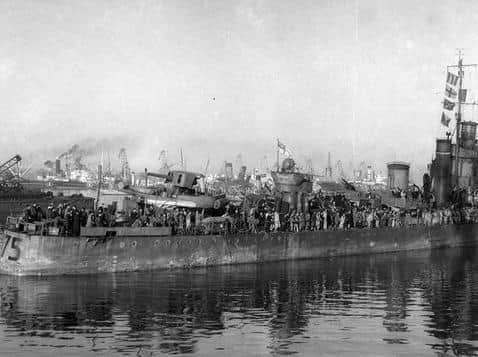

"The personal stories of these men remind us of the extreme danger they faced at sea as Germany tried to starve Britain into submission.
"Others served in the Mediterranean Battles with the Italian Navy, in the Far East, and in the freezing waters of the Arctic Circle. Here are some of their stories”.
Torpedoed by a U-boat 'Ace'
Eric Beeson lived at 96 Saltisford with his parents, and worked at Improved Hinges Ltd before joining the Royal Navy. He joined the Destroyer HMS Hecla as a stoker, a dangerous job in many ways; if the ship was torpedoed the stokers would be the last to get out, and the atmosphere in the engine room was polluted with soot and fumes.
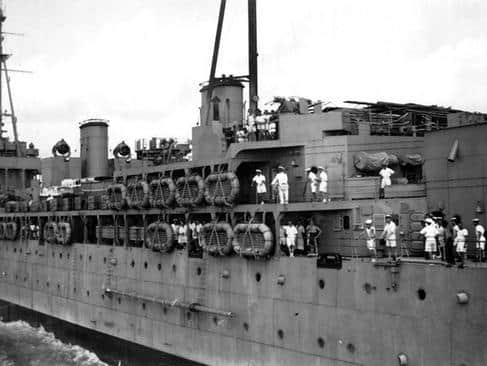

Advertisement
Hide AdAdvertisement
Hide AdLeading a convoy carrying supplies from South Africa to Liverpool, Hecla was struck by five torpedoes fired by U-boat 515 captained by Werner Henke, regarded by the Germans as a submarine 'ace'.
His U-boat was to sink no fewer than 25 ships before it was badly damaged and the crew were captured by the Americans.
Of the 850 men aboard HMS Hecla, 282 were killed or missing including 20-year-old Eric Beeson.
The others were rescued by the destroyer HMS Venomous; it limped into Casablanca harbour with the decks crammed with survivors.
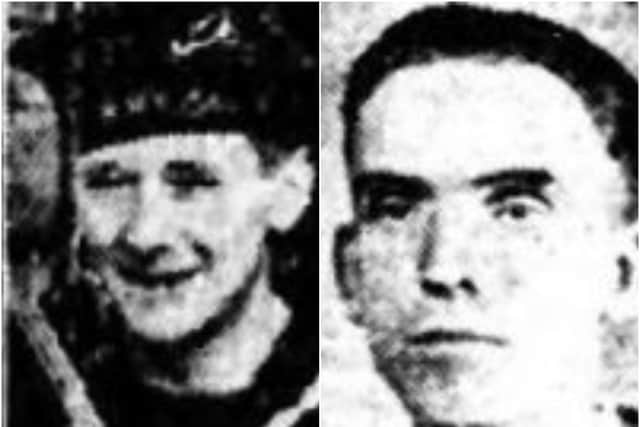

The dangers of being a Stoker
Advertisement
Hide AdAdvertisement
Hide AdAlbert Brown was also serving in destroyers as a Stoker, First Class. The son of George and Ellen Brown of 58 Woodhouse Street, he had joined the navy at the age of 18 and had served 21 years before he was brought home from the British fleet at Scapa Flow in 1941, suffering from chronic bronchitis.
All those years in the engine rooms had taken their toll on his health and he died of heart failure in Aberdeen Naval Hospital. He is buried in Warwick Cemetery and commemorated at St.
Paul's Church as well as on the war memorial.
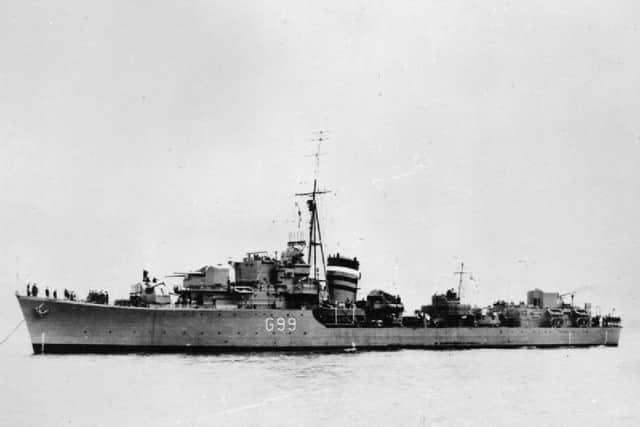

Bad Coal
Robin 'Jim' Burson from 6 Station Avenue, Warwick, joined the Merchant Navy as an Able Seaman and Gunner.
The importance of the stokers keeping the engines at full power was demonstrated on 6th January 1942 when Jim's ship the SS Baron Erskine, en route to Garston in Liverpool from Tampa, Florida, fell behind its convoy and the escorts because of so-called 'bad coal'.
Advertisement
Hide AdAdvertisement
Hide AdThe ship was torpedoed off the west coast of Ireland. The 41 members of the crew took to lifeboats and according to German naval records, the submarine, U-701, surfaced and the captain Horst Degen questioned the men. The U-boat then submerged. The lifeboats were not found and none of the seamen survived.
The U-boat menace
As the war progressed Germany stepped up its production of U-boats and developed their technology.
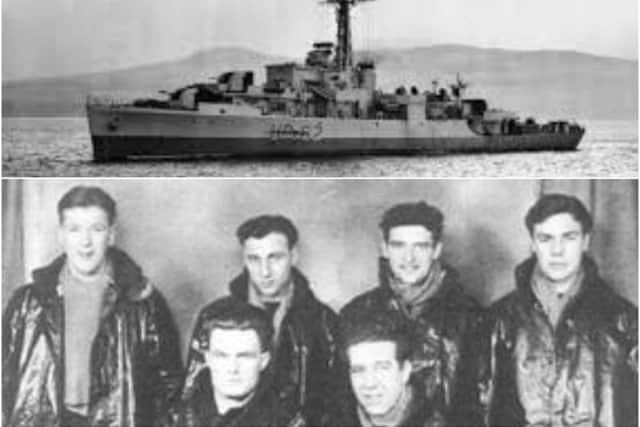

Torpedoes could lock on to a target magnetically or be guided by the sound of engines.
The U-boat fleet operated around the world.
Thomas Coller lived with his family at 97 Friar Street. He was one of 19 children born to his mother, Clara, though only 8 survived. Thomas served as an Able Seaman on HMS Galatea, a light cruiser that in 1941 had been involved in the hunt for the German battleship Bismark.
Advertisement
Hide AdAdvertisement
Hide AdLater that year the Galatea was torpedoed and sunk off Alexandria with the loss of 470 men. Thomas' brother Ernest also died in the war, killed at Dunkirk during the evacuation. Both brothers are commemorated on the war memorial.
Harold Wilshire and his family lived at 20A Emscote Road. After attending All Saints' School he worked at Tuckey's Butchers in Smith Street and when he was old enough joined the Royal Navy, becoming an Able Seaman aboard HMS Lapwing, a specialised convoy defence vessel.
Just a few months before the end of the war, when Harold was 19 years old, the Lapwing was escorting a Russian convoy towards the port of Murmansk in the far north of Russia when it was torpedoed and sank inside 20 minutes.
158 sailors were killed and 61 survived. One of the survivors, Thomas Jess, described later how those in the lifeboats succumbed to the bitter cold one by one until HMS Savage arrived to rescue the survivors.
Advertisement
Hide AdAdvertisement
Hide AdJohn Marchant from 52 Cape Road was also serving in the icy northern waters when his ship was torpedoed. John had been Superintendent Clerk at Myton Hospice Children's Home before enlisting in the navy.
On 17th February 1945, his ship the HMS Bluebell was torpedoed by a U-Boat in the Barents Sea inside the Arctic Circle. The ship exploded and all on board were lost.
John Goodwin lived at Emscote and is commemorated at All Saints' Church. He was a telegraphist serving on the destroyer HMS Laforey in the Mediterranean.
With five other destroyers, the ship was hunting a U-boat, (U-223), north of Palermo. Depth charges brought the submarine to the surface where it came under fire from the destroyers, but before the U-boat was sunk, it was able to fire three torpedoes that struck the Laforey.
She sank quickly. Out of a company of 247 only 65 survived.
Advertisement
Hide AdAdvertisement
Hide AdGeorge Measures was another Emscote Road man who served in the Mediterranean, living at number 63 with three siblings and his parents, Arthur and Ethel, who were Master and Matron of the Warwick Poor Law Institution, (the Workhouse), at 91 Lakin Road.
George went to Warwick School and Cambridge University where he studied music before joining the Marines as a Lieutenant. In August 1942 he was aboard HMS Indomitable, an aircraft carrier that was part of a huge convoy of warships attempting to break the siege of Malta.
The Indomitable came under sustained attack from U-boats and Italian aircraft and was badly damaged. George was 'lost at sea' during the battle. He was 25.
Mark Townsend lived at 42 Crompton Street. His father was a chimney sweep. Mark joined the Royal Navy as an Air Mechanic, serving on HMS Thane a convoy escort ship that also carried aircraft from the USA. In February 1945 it was torpedoed off Northern Ireland and badly damaged.
Advertisement
Hide AdAdvertisement
Hide AdMark was wounded and died from his injuries in hospital in Scotland. The damaged ship succeeded in delivering nine American Sikorsky helicopters, the first to come to the UK.
From fishing for herring to fishing for mines
Cyril Balster is commemorated at All Saints Church, Emscote, as well as on the war memorial, so was a member of the congregation, though the researchers have not found a local address for him; (information will be welcome).
He was a carpenter and joiner. His family came from Ramsgate and when war was declared he was working on a 'drifter' called Ocean Sunlight, a fishing boat using drift-nets to catch herring.
The boat was requisitioned by the Ministry of Defence and operated as a mine sweeper in the channel. It was dangerous work.
Advertisement
Hide AdAdvertisement
Hide AdGerman mines were released all round the southern ports, some exploding on contact, others tethered to the sea floor below the surface and exploding when a magnetic field was detected.
On 13th June 1940, Her Majesty's Drifter Ocean Sunlight was returning to port at Seaford in Sussex. The wife of the ship's cook, Albert Roberts, had gone down to the harbour with her children to greet her husband. She started waving as the boat came to within 800 meters of the shore when it struck a mine and blew up.
Ten of the crew were lost, including the 'Second Hand', Cyril Balster. He was 27.
Secretary of Unlocking Warwick, Rick Thompson, said, “These human stories bring into sharp focus the extreme sacrifices made by so many Warwick men in the war.
Advertisement
Hide AdAdvertisement
Hide Ad"We would like to thank all the people who have been in touch with us after reading about our project in the Warwick Courier, as we seek to find the stories behind every one of the 112 names on the WW2 plaques on the memorial.
"You can see the personal details of 'The Fallen'; on the War Memorial website: www.warwickwarmemorial.org.uk
"If you have photographs of the local men who died or information about them, contact Christine Shaw at [email protected] "